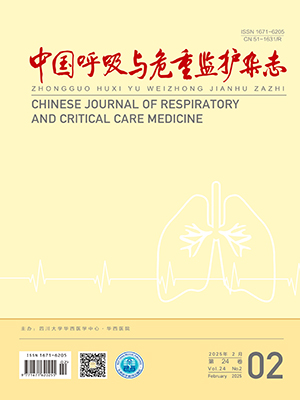| 1. |
Ware LB, Matthay MA. The acute respiratory distress syndrome. N Engl J Med. May 4; 2000 342(18): 1334-1349.
|
| 2. |
Rubenfeld GD, Caldwell E, Peabody E, et al. Incidence and outcomes of acute lung injury. N Engl J Med. Oct 20; 2005 353(16): 1685-1693.
|
| 3. |
Raebel MA, Malone DC, Conner DA, et al. Health services use and health care costs of obese and nonobese individuals. Arch Intern Med. 2004; 164: 2135-40.
|
| 4. |
Gong MN, Bajwa EK, Thompson BT, et al. Body mass index is associated with the development of acute respiratory distress syndrome. Thorax. 2010 Jan; 65(1): 44-50.
|
| 5. |
Karnatovskaia LV, Lee AS, Bender SP, et al. Obstructive Sleep Apnea, Obesity, and the Development of Acute Respiratory Distress Syndrome. J Clin Sleep Med. 2014 Jun 15; 10(6): 657-62.
|
| 6. |
Newell MA, Bard MR, Goettler CE, et al. Body mass index and outcomes in critically injured blunt trauma patients: weighing the impact. J Am Coll Surg. 2007 May; 204(5): 1056-61; discussion 1062-4.
|
| 7. |
Lavie CJ, Milani RV, Ventura HO. Obesity and cardiovascular disease: risk factor, paradox, and impact of weight loss. J Am Coll Cardiol 2009; 53: 1925-1932.
|
| 8. |
Kalantar-Zadeh K, Horwich TB, Oreopoulos A, et al. Risk factor paradox in wasting diseases. Curr Opin Clin Nutr Metab Care 2007; 10:433-442.
|
| 9. |
Memtsoudis SG, Bombardieri AM, Ma Y, et al. Mortaliy of patients with respiratory insufficiency and adult respiratory distress syndrome after surgery: the obesity paradox. J Intensive Care Med. 2012 Sep-Oct; 27(5): 306-11.
|
| 10. |
O’Brien JM Jr, Welsh CH, Fish RH, et al. Excess body weight is not independently associated with outcome in mechanically ventilated patients with acute lung injury. Ann Intern Med. 2004 Mar 2; 140(5): 338-45.
|
| 11. |
Morris AE, Stapleton RD, Rubenfeld GD, et al. The association between body mass index and clinical outcomes in acute lung injury. Chest. 2007 Feb; 131(2): 342-8.
|
| 12. |
De Jong A, Molinari N, Sebbane M, et al. Feasibility and effectiveness of position in morbidly obese patients with ARDS: a case-control clinical study. Chest. 2013 Jun; 143(6): 1554-61.
|
| 13. |
Soubani AO, Chen W, Jang H.The outcome of acute respiratory distress syndrome in relation to body mass index and diabetes mellitus. Heart Lung, 2015, 44(5): 441-447.
|
| 14. |
Soto GJ, Frank AJ, Christiani DC, et al. Body mass index and acute kidney injury in the acute kidney injury in the acute respiratory distress syndrome. Crit Care Med, 2012, 40(9): 2601-2608.
|
| 15. |
O’Brien JM Jr, Phillips GS, Ali NA, et al. Body mass index is independently associated with hospital mortality in mechanically ventilated adults with acute lung injury. Crit Care Med, 2006, 34(3): 738-744.
|
| 16. |
Stapleton RD, Dixon AE, Parsons PE, et al. the NHLBI Acute Respiratory Distress Syndrome Network. The association between body mass index and plasma cytokine levels in patients with acute lung injury. Chest, 2010, 138(3): 568-577.
|
| 17. |
Pischon T, Boeing H, Hoffmann K, et al. General and abdominal adiposity and risk of death in Europe. N Engl J Med, 2008, 359(20):2105-2120.
|
| 18. |
Mohamed-Ali V, Goodrick S, Bulmer K, et al. Production of soluble tumor necrosis factor receptors by human subcutaneous adipose tissue in vivo. Am J Physiol, 1999, 277(期): E971-E975.
|
| 19. |
Li X, Handee W, Kuo MH. The slim, the fat and the obese: guess who lives the longest? Curr Genet. 2016 May 26.
|
| 20. |
Schenkeveld L, Magro M, Oemrawsingh RM, et al. The influence of optimal medical treatment on the ‘obesity paradox’, body mass index and long-term mortality in patients treated with percutaneous coronary intervention: a prospective cohort study. BMJ Open, 2012, 2(期): e000535.
|




